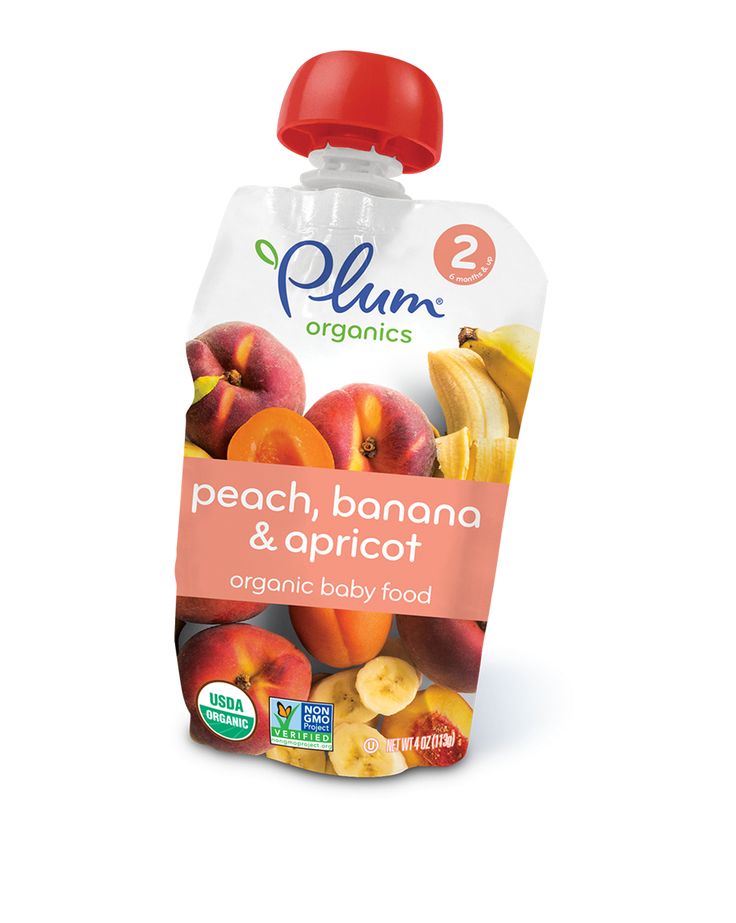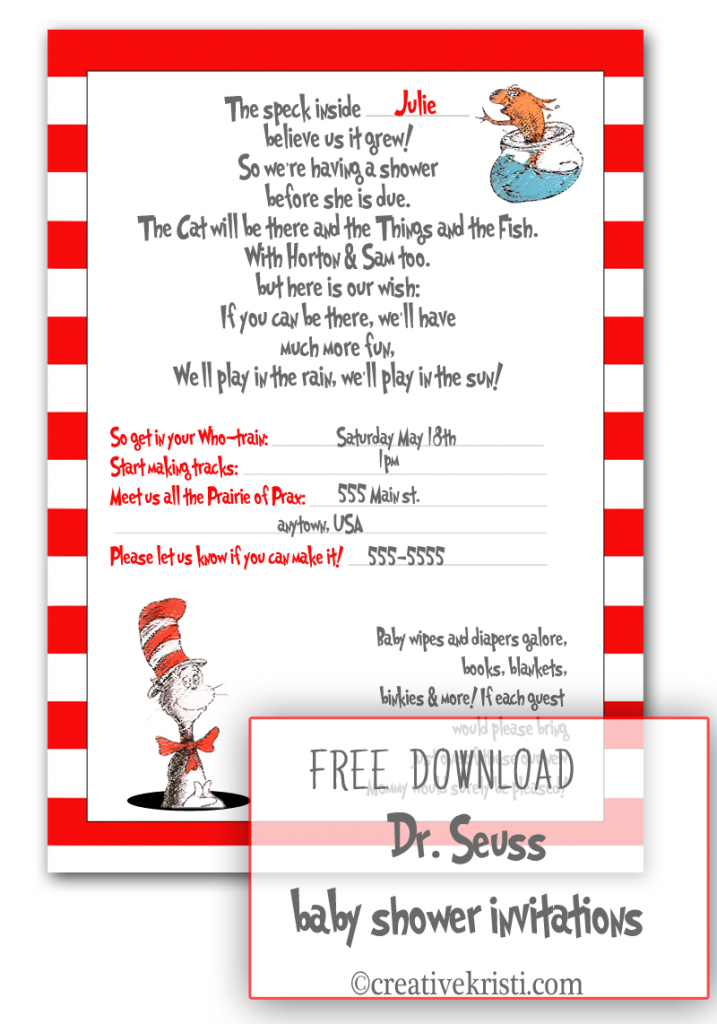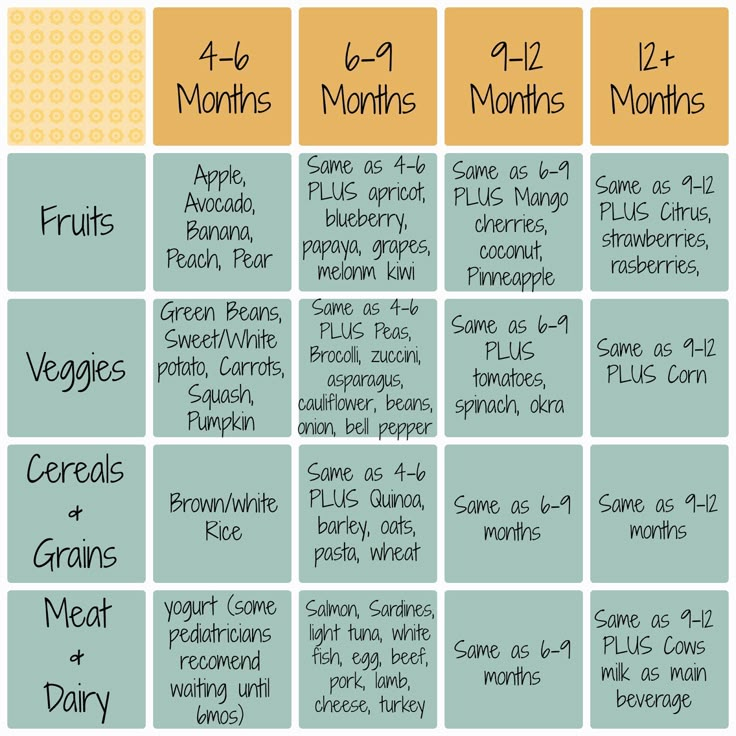Berries baby food
When babies can have strawberries, blueberries, raspberries, and other berries
- Community
- Getting Pregnant
- Pregnancy
- Baby names
- Baby
- Toddler
- Child
- Health
- Family
- Courses
- Registry Builder
- Baby Products
Advertisement
Photo credit: iStock.com / Demianastur
Berries – including strawberries, raspberries, blueberries, and others – can be a healthy part of your baby's diet soon after they begin to eat solid food. But if your baby has chronic eczema or a food allergy, talk to your doctor first.
Are berries healthy for babies?
Berries – and fruits in general – are a great early food for your baby. Starting them off on healthy foods will help create a foundation for good eating habits as they get older, and serving them a variety of foods when they're young will help them get used to many flavors and textures.
Berries are a great source of fiber, which helps digestion, and antioxidants and phytonutrients, which can help protect your body from cardiovascular disease, inflammatory disorders, and some types of cancer. These are other nutrients found in some common berries:
- Cranberries: vitamin C, as well as properties that help improve gut health and prevent urinary tract infections
- Blueberries: vitamins C and K, as well as manganese and potassium
- Strawberries: vitamins A, B-complex, C, and E
- Raspberries: vitamins B-complex and C, as well as manganese, potassium, and omega-3 fatty acids
By the time your baby is 8 to 12 months old, they can have 1/2 to 3/4 cup of fruit a day. And once your child is a year old, give them half a cup to a full cup of fruit daily. Learn more about toddler nutrition.
One concern is that conventionally grown strawberries (and most other berries) have relatively high levels of pesticide residue. You can buy organic berries to avoid pesticides, but research shows rinsing them in water or boiling them (which will soften the berries and make them easier for your baby to eat anyway) can remove most pesticide residue. You can also soak the berries in a water bath along with a bit of apple cider vinegar or baking soda to help remove pesticides. Simply soak for about 10 minutes, rinse with cold water, and drain.
You can also soak the berries in a water bath along with a bit of apple cider vinegar or baking soda to help remove pesticides. Simply soak for about 10 minutes, rinse with cold water, and drain.
Can babies be allergic to berries?
Berries aren't one of the most allergenic foods, but they can still cause allergies. Experts say most babies can start eating foods like strawberries and raspberries after they have a few standard solid foods (such as pureed meat, vegetables, and other fruits, like pears,) without experiencing an allergic reaction.
Children with mild eczema or a family history of food allergies or asthma can try foods like berries as long as they tolerate more common foods first. But there are some cases where it's best to wait until your doctor gives the green light to give your baby a new kind of food. Talk to the doctor if your baby:
- Has a sibling with a peanut allergy
- Has moderate to severe eczema after following a doctor's skin treatment plan
- Has had an immediate allergic reaction to a food in the past
- Was previously diagnosed with a food allergy
Advertisement | page continues below
When introducing a potentially allergenic food, experts recommend giving it to your baby at home, rather than at daycare or a restaurant. And as with any new food, serve it for three to five days before offering something else new. That way you can monitor your baby for a reaction and know what's likely causing it.
And as with any new food, serve it for three to five days before offering something else new. That way you can monitor your baby for a reaction and know what's likely causing it.
Signs of a food allergy are facial swelling (including the tongue and lips), skin rash, wheezing, abdominal cramping, vomiting, and diarrhea. If your baby shows any of these signs – mild or severe – or has trouble breathing right after trying a new food, call 911.
How to serve berries to your baby
When your baby is just starting solid foods, don't serve whole, raw berries – they could be a choking hazard. Start off by serving your baby cooked, pureed berries with no extra ingredients.
It's okay if you don't strain the seeds out of your baby's food – they're not a choking hazard. But some babies may not digest the seeds in berries very well. If you notice seeds in your child's dirty diaper, don't be alarmed. It may look strange, but it just means the seeds passed harmlessly through your baby's digestive system.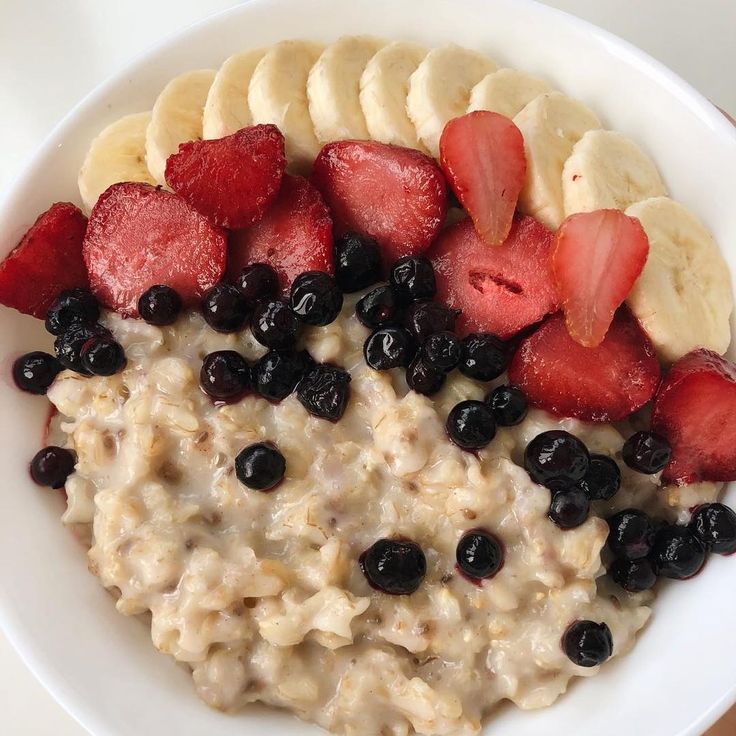
Berries are naturally a perfect size for children to learn the pincer grasp when picking them up and eating them. Once your baby is eating other finger foods successfully and has several teeth – usually around 8 to 10 months – you can give them pieces of raw strawberries (about half an inch big), and whole blueberries and raspberries.
Try these recipes with berries for your baby:
- Yogurt and berry swirl
- Coconut milk rice pudding with blueberry compote
Was this article helpful?
Yes
No
Rebekah Wahlberg
Rebekah Wahlberg is an associate editor at BabyCenter, the world's number one digital parenting resource. She lives in Southern California with her silly dog Booger, where she enjoys hiking, yoga, and watching Netflix when she "should" be reading. Wahlberg is passionate about creating content that helps parents and parents-to-be equip themselves with everything they need to succeed.
3 Berry + Apple Baby Food Puree (6+ Months - Stage 2)
Home » Feeding Style » Baby Food Purees » Stage Two » 3 Berry + Apple Baby Food Puree
by Michele Olivier on August 20, 2014 (updated Feb 26, 2021)
Jump to Recipe
5 stars (4 ratings)
This 3 Berry + Apple Baby Food Puree is a great thick baby food puree that is bursting with essential nutrients for growing baby – fiber, antioxidants, phytoflavinoids and countless other vitamin and minerals.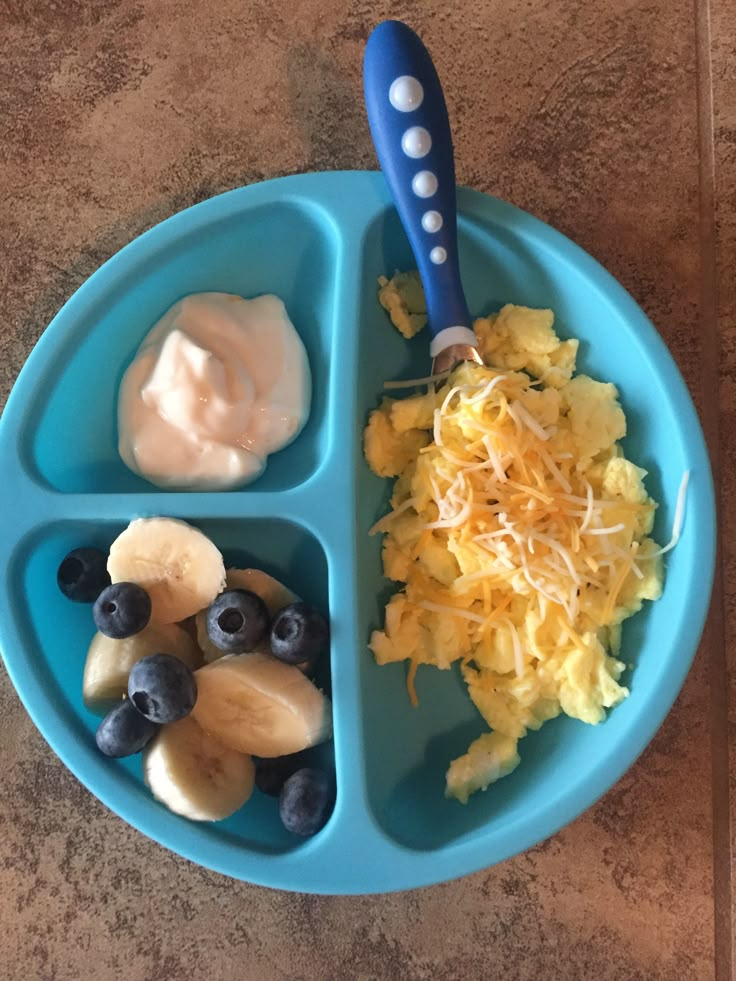 This puree is perfect to spoon into a reusable pouch or into freezer trays for your freezer stash.
This puree is perfect to spoon into a reusable pouch or into freezer trays for your freezer stash.
I’ve done an all berry puree recipe before, and don’t get me wrong, it rocks. The problem is that it can be a little runny for anything but a spoon fed puree.
What I really wanted is a berry puree recipe that I could toss in a reusable pouch to be able to take on the go with us.
Something that would highlight the bountiful berries that we have in the market right now.
Something that would give my little one a ton of energy for all of her swimming, playing and running.
Something that I could take out of the freezer right before we leave for the day and it would be ready when the mid-morning breakdown inevitably happens.
It was easy. All I had to do, was just add an apple.
Which is pretty much the cure for all baby food puree problems.
Too savory? Add an apple.
Too thin? Add an apple.
Making a puree with an unusual vegetable and not sure the little one is going to eat? Add an apple.
Want any baby to gobble up your puree? Add an apple.
Besides being sweet, simple flavored and versatile the apple is full of insoluble and soluble fiber which help maintain regular bowls. The apple also helps maintain a healthy weight, promotes prostate, liver, bone and colon health and counters the effects of oxidative damage.
So go ahead, add an apple or two to any puree.
Other fun ways to serve this puree:
- Pour into reusable pouch, put in freezer and take out in morning for a great cold mid-morning snack.
- Spoon over greek yogurt with a sprinkle of chopped walnut and bananas for a great toddler breakfast.
- Mix with chicken and spinach puree for a wholesome baby puree dinner.
- 18 Stage 2 Baby Food Purees (that your baby actually eat!)
- 12 Budget-Friendly Baby Food Recipes
- 9 5-Minute Baby Food Purees
- Homemade Quinoa Baby Cereal (2-Ingredients)
- Apple, Raspberry + Vanilla Baby Food Puree
- 5-Minute Blueberry Pear Baby Food Puree
- 1 1/2 cups combinatino of blueberry, raspberry and blackberry
- 2 apples, cored, sliced (peeling is optional)
- 1/4 tsp fresh rosemary, coursley chopped
- 1/4 cup liquid, water, formual, breastmilk or broth
In a medium sauce pan, heat the apples and liquid over medium-low heat for 10 minutes, stirring occassionaly.
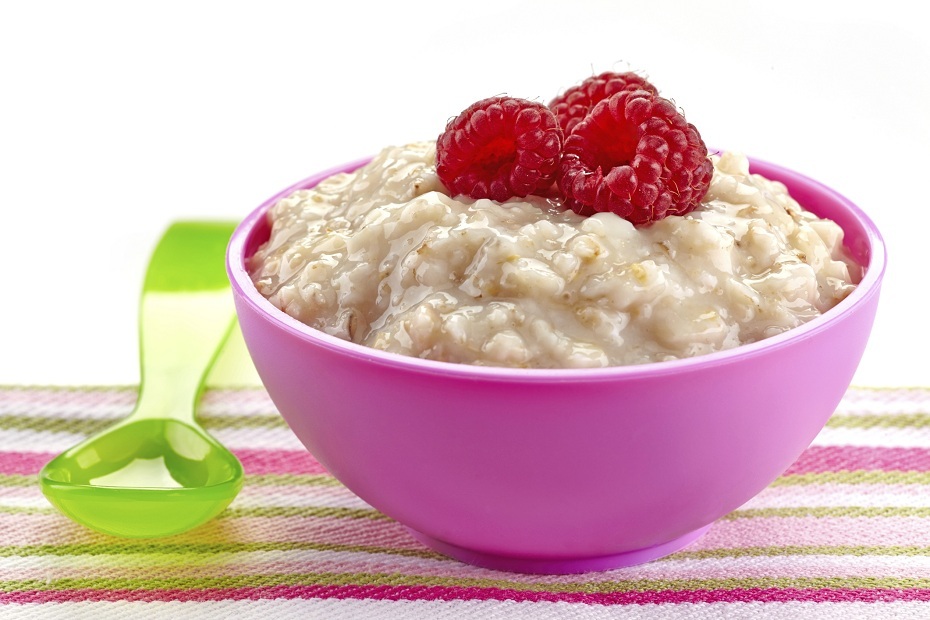
Add the berries and gently stir. Cook another 5 minutes. Let cool slightly.
Transfer the apples and berries into a blender or food processor. Add rosemary. Puree for 1-2 minutes or until you have reached your desired texture, adding additional liquid in tabelspoon increments if needed.
Note – There will be little seeds from the berries in this puree. If you want the puree to be completely smooth, pass the puree through a fine mess sleeve.
Age: 6+ months
Yield: makes 15 ounces.
Note on Berries: you can use fresh or frozen berries in this recipe. In fact, I would recommend using frozen organic in this recipe as they are a great quality for a good price.
Note on Organic: I would recommend using organic produce for this recipes as both berries and apples are on the dirty dozen list.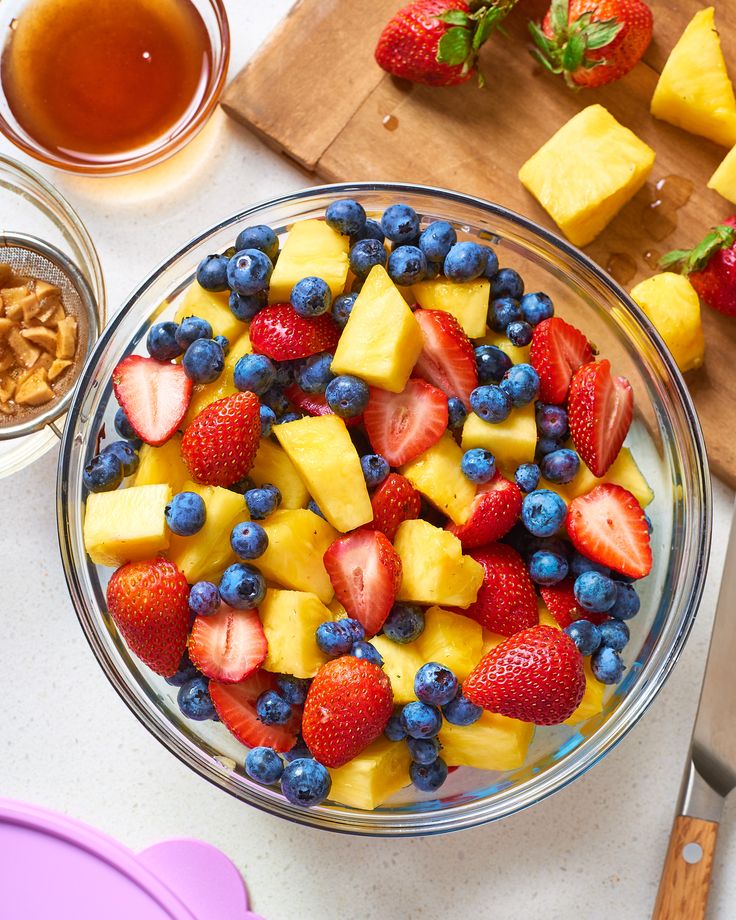 Organic apples are just slightly more expensive than conventional apples and you can usually find frozen organic berries at a great price.
Organic apples are just slightly more expensive than conventional apples and you can usually find frozen organic berries at a great price.
Note on Seeds: There will be little seeds from the berries in this puree. If you want the puree to be completely smooth, pass the puree through a fine mess sleeve.
Storage: Fridge – store in an airtight container in the fridge for 3-4 days. Freezer – can be frozen for up to 4 months (this and thisare my favorite freezer storage containers).
Favorite Kitchen Tools: Get a list of my favorite kitchen tools to make the best baby food here!
Did you make this recipe?
Tag @babyfoode on Instagram and hashtag it #babyfoode!
Pin Recipe Email a Friend
Berries in the diet of infants: at what age should they be introduced into complementary foods
Kiseleva Elena Sergeevna
Candidate of Medical Sciences, Scientific Advisor MAMAKO ®
Summer and autumn are a time rich in the gifts of gardens and orchards.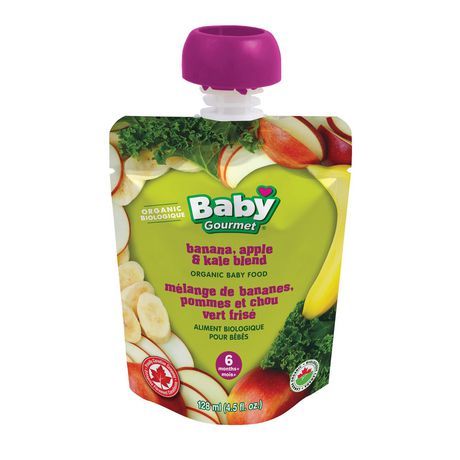 During this period, pediatricians pay special attention to berries in baby food, although today they can be bought in the store all year round. But at what age should berries be introduced to babies? What berries are better to start acquaintance with and is it possible to mix them with other complementary foods? Advises Elena Sergeevna Kiseleva, Candidate of Medical Sciences, Scientific Advisor to MAMAKO ® .
During this period, pediatricians pay special attention to berries in baby food, although today they can be bought in the store all year round. But at what age should berries be introduced to babies? What berries are better to start acquaintance with and is it possible to mix them with other complementary foods? Advises Elena Sergeevna Kiseleva, Candidate of Medical Sciences, Scientific Advisor to MAMAKO ® .
When and how to introduce berries into the diet of a child
— Elena Sergeevna, why are berries useful for children under one year old and why should they be in the diet?
- Infancy is a good time to include berries in the children's menu. They are good for health: they are rich in vitamins, microelements, dietary fiber and, what is very important, pectin and sugars of natural origin. In addition to the undoubted benefits, the berries are very tasty and fragrant, and, as a rule, all the kids eat them with great pleasure. nine0003
— Why don't we start complementary foods with berry purees or baby cereals with berries? When can a baby be given berries?
— Berry purees are not the first complementary food, they are prescribed to the child in addition to the main food — milk formula, dairy-free or milk porridge in small quantities: 30-60 g at 5-6 months and up to 100 g by the end of the first year of life. Baby cereals with berries are great for diversifying the menu and tastes when the baby is already familiar with the first cereals and vegetables. nine0003
Baby cereals with berries are great for diversifying the menu and tastes when the baby is already familiar with the first cereals and vegetables. nine0003
— What berries should I start complementary foods with?
— If the period of introduction of berries into the diet coincides with the summer-autumn period, use fresh fruits. Mom chooses one type of berry culture, kneads the berry with a spoon and offers the baby a small amount of the resulting puree.
If the child does not have allergies, gradually increase the portion to 30 g over two or three days. First of all, you can try light varieties of berries - they are considered less allergenic - for example, white currants. After five or six days, you can try a different type of berry. And in the future, give the child mashed potatoes from several types. nine0003
— When can I give strawberries to my baby?
— Doctors warn parents not to eat babies under one year old. Strawberries have a high potential for allergenicity. It must be tried with great care.
It must be tried with great care.
Pediatricians believe that if a child does not have allergies, strawberries should not be given earlier than 8-9 months, and some experts recommend introducing this berry to the baby no earlier than 1.5 years - this is the time to switch to a common table. The daily norm of strawberries for a child of 1 year old is no more than 1-2 pieces. Always start with a small piece of strawberries. If there are no signs of allergy, slightly increase the portion and then add one berry per day. nine0003
Important! Skin rashes and redness may indicate a food allergy. In this case, you need to visit a doctor. Strawberries are not recommended for children with a burdened allergic history, a sensitive digestive system or gastroenterological diseases, since its bones, albeit microscopic, can cause discomfort in the tummy. Also, with caution, you should feed the baby with raspberries and strawberries.
When to introduce berries into complementary foods and what kind of berries can a baby
— How many berries can a baby eat without harm to the body?
- Note that berries in a children's plate replace fruit puree.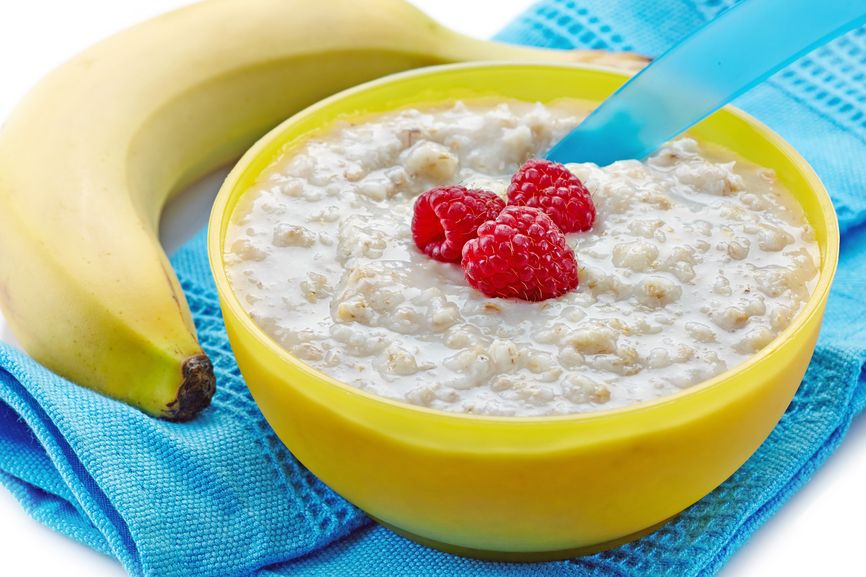 Therefore, their number should not exceed the total volume of fruit and berry complementary foods. At 5 months, the norm of the volume of fruits and berries is 30-60 g, by 1 year - 100 g, that is, about a handful.
Therefore, their number should not exceed the total volume of fruit and berry complementary foods. At 5 months, the norm of the volume of fruits and berries is 30-60 g, by 1 year - 100 g, that is, about a handful.
- The best time for berries - morning, afternoon or evening?
- The general recommendation is to start exploring the berries in the morning so that you can track the reaction. At the same time, no other new solid food is introduced on this day in order to understand with certainty what the child reacted to. Reception time individually. The daily portion of berries and fruits can be divided into several feedings in the morning and afternoon. nine0003
Are berries always good for digestion?
- Gooseberries and raspberries can relax the stool.
- Grapes contribute to increased gas formation and can provoke colic.
- Blueberries have a fixing effect, so they can be used to manage diarrhea, but for babies with a tendency to constipation, it is better to limit them.
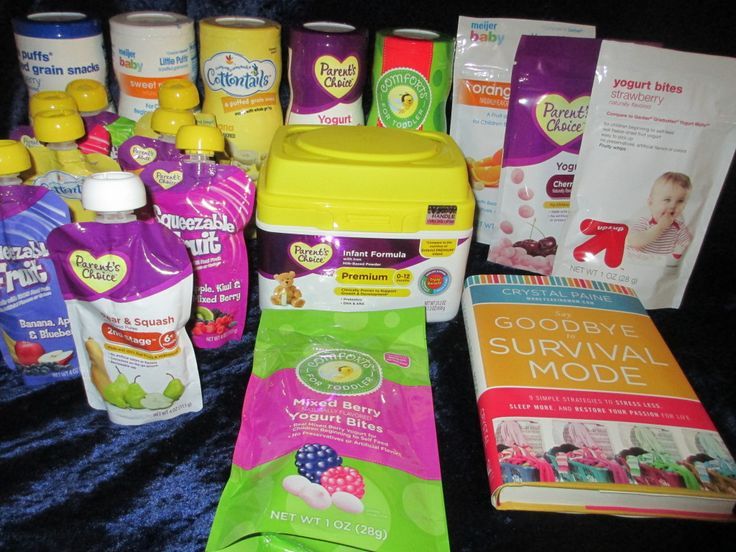
- White, red and black currants help babies cope with constipation, but are undesirable for frequent or loose stools. nine0054
— Is it better to introduce berries for complementary foods fresh or processed?
— Fresh berries from the bush or farm fruits are best for feeding your baby. Before serving to a child, they are mashed or simply laid out on a plate, depending on age. Many berries contain seeds and tough skins. Not knowing how to chew well, the baby can choke on them. Be extra careful! With large berries, you must first remove the peel: try to cook plum puree for babies in this way, it will turn out to be softer and more uniform. As soon as the child learns to chew solid food, join the whole fruit. nine0003
To preserve the berry harvest until spring, it is frozen. Some of the vitamins are also preserved in canned fruits, so it is especially useful to consume them in winter. In summer, compotes, fruit drinks, jelly are cooked for children. Any berries are suitable for this, but for starters - all types of currants, cherries, plums. It is important to follow the basic rule of preparation: granulated sugar is placed in drinks in a small amount.
Any berries are suitable for this, but for starters - all types of currants, cherries, plums. It is important to follow the basic rule of preparation: granulated sugar is placed in drinks in a small amount.
— What do children like to eat with berries?
— Cottage cheese, as well as children's yogurt or kefir, will be a delicious tasty addition to a berry plate. In the off-season, it is very convenient to use combined complementary foods with cottage cheese, which include berry and fruit components. nine0003
Fruit and berry filler - a source of organic acids, potassium and dietary fiber. The berry and milk components complement each other, provide a longer feeling of fullness and enrich the diet with new flavors, awakening the baby's appetite. Fresh berries go perfectly with cereals. The taste of the same porridge will change depending on what berries you add to it - and, as a rule, children really like it.
— Where to buy berries for a child — in shops, markets or summer residents? nine0003
- I advise moms and dads to choose only a quality product in trusted outlets. Even berries from your own garden plot require careful processing before they get to the baby's table. They must be washed well with running water and then scalded with boiling water.
Even berries from your own garden plot require careful processing before they get to the baby's table. They must be washed well with running water and then scalded with boiling water.
— Berries in children's cereals: are they natural and do they contain all the useful substances, like fresh ones?
— Today, many types of dairy and non-dairy cereals of industrial production are enriched with dry carefully chopped natural berries - blueberries, blueberries, raspberries, strawberries. Such complementary foods are safe, made from proven raw materials, contain all the necessary nutrients and are rich in vitamins. The addition of natural berries makes the taste of cereals richer and more aromatic - cereals easily become a favorite dish for babies. nine0003
— MAMAKO porridge ® “7 cereals with berries” — what are its advantages? How does goat's milk help to absorb useful substances from berries?
- The nutritional value of ready-made cereals with goat's milk is increased due to the milk base in their composition.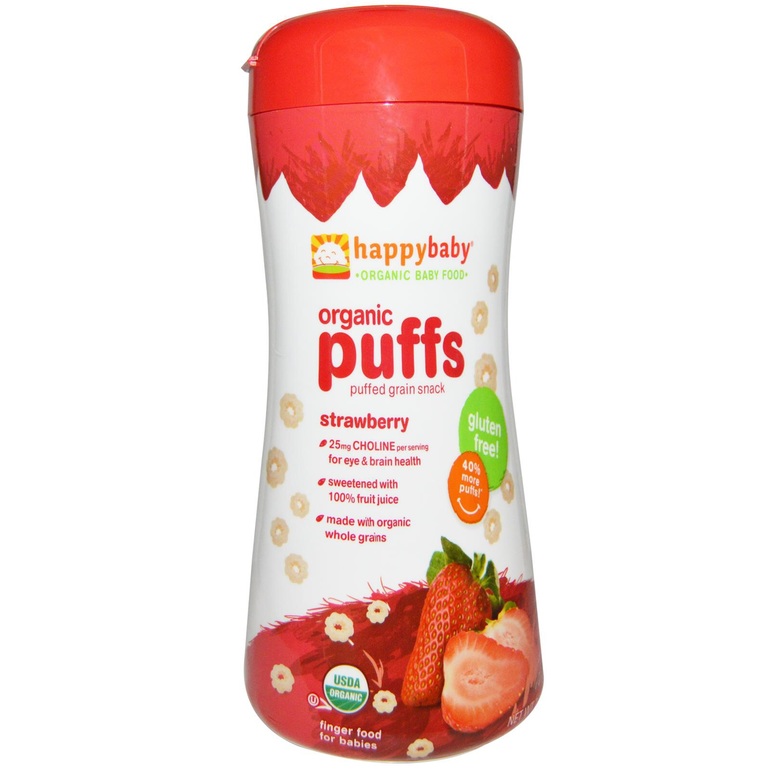 Goat milk is a natural source of protein with high biological value, which is close to breast milk protein. It is quickly and easily digested (better than cow's milk protein) and therefore helps babies digest berries more correctly, get more benefits from them, as well as from multi-cereals in porridge. nine0003
Goat milk is a natural source of protein with high biological value, which is close to breast milk protein. It is quickly and easily digested (better than cow's milk protein) and therefore helps babies digest berries more correctly, get more benefits from them, as well as from multi-cereals in porridge. nine0003
Checklist. Basic rules for introducing berries into a child's diet
- For the first berries, choose crops that rarely cause allergies - white currants, blueberries, gooseberries.
- Strawberries, wild strawberries, raspberries are introduced with caution not earlier than 1 year. Exotic berries are recommended to be postponed until 1.5-2 years.
- Don't give whole raw berries to your baby - he can choke on them. Turn berries into puree. The same with large fruits - blackberries, watermelons, cherries. Slices and pieces can be given when the baby is already chewing well. nine0054
- Berries may cause food allergies. Start with a small amount of this product and, of course, watch for reactions.
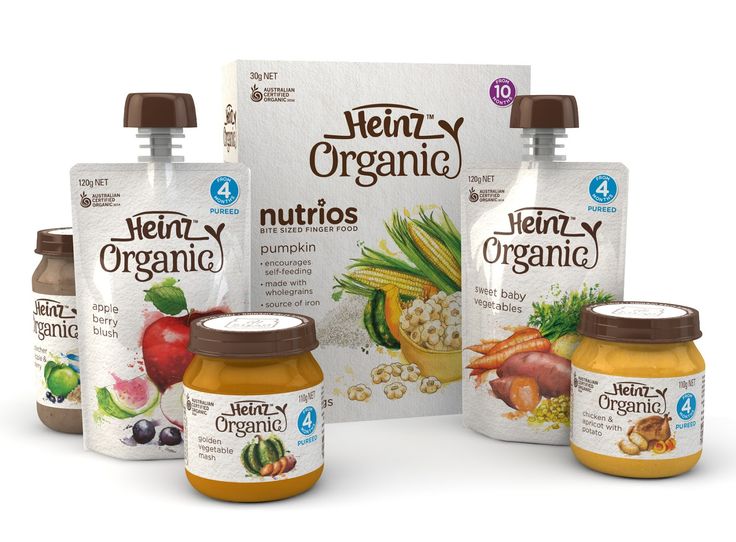 If you notice changes in your baby's skin or stool, see your doctor right away.
If you notice changes in your baby's skin or stool, see your doctor right away.
Berries are great food for your baby up to a year old. Acquaintance with them, as with other complementary foods, should occur gradually: first, the baby tries a small amount of one type of berry, then another. Feeding berries should be easy and safe. If the baby does not like their sourness or seeds, try offering him ready-to-use tasty cereals with industrial-produced berries: their rich composition, natural sweetness and delicate texture will captivate the young gourmet from the first spoon. nine0003
* Breast milk is the best food for babies. WHO recommends exclusive breastfeeding for the first 6 months of a child's life and continued breastfeeding after complementary foods are introduced until the age of 2 years. Before introducing new products into the baby's diet, you should consult with a specialist. The material is for informational purposes and cannot replace the advice of a healthcare professional. For feeding children from birth.
For feeding children from birth.
Information sources
1.
The program for optimizing the feeding of children in the first year of life in the Russian Federation. — M., 2019.
2.
Innovations in baby nutrition / ed. V. A. Tutel'yan, D. B. Nikityuk, I. Ya. Konya, E. A. Pyr'eva. – MIA, 2020.
#Tips for Mom #Complementary food
See also
nine0002 Digestion in newborns and infants and its features#Baby Digestion #breast-feeding #baby formula #Lure #Tips for mom #Baby development
Kiseleva Elena Sergeevna
Candidate of Medical Sciences, Scientific Advisor MAMAKO ®
Allergy to complementary foods in a child: what should parents do
#allergy #Lure #Tips for mom #Baby digestion #Pure composition
Kiseleva Elena Sergeevna
Candidate of Medical Sciences, Scientific Advisor MAMAKO ®
First tests and vaccinations: how to prepare yourself and your child
#Advice for Mom
Kizino Polina Alexandrovna
pediatrician, perinatal psychologist
How to feed a child up to a year in the heat
#Tips for Mom #breast-feeding #baby formula #Complementary food
Kiseleva Elena Sergeevna
Candidate of Medical Sciences, Scientific Advisor MAMAKO ®
Infant formula has changed - what you need to know
#baby formulas #Tips for Mom
Kizino Polina Alexandrovna
pediatrician, perinatal psychologist
Calendar of visits to doctors during the first year of a child's life
#Advice for Mom
Kizino Polina Alexandrovna
pediatrician, perinatal psychologist
How does the digestion and stool of a child change with the introduction of complementary foods and products from the general table
#Baby Digestion #Lure #Tips for mom #colic #allergy
Kiseleva Elena Sergeevna
Candidate of Medical Sciences, Scientific Advisor MAMAKO ®
Goat's milk in children's nutrition: for or against
#Food #Tips for mom #Baby digestion #breastfeeding
Javier Diaz Castro
professor, lecturer
Dairy-free cereals for the first feeding
#Food #Clean composition #Tips for mom #allergy #organic nutrition
Kiseleva Elena Sergeevna
Candidate of Medical Sciences, Scientific Advisor MAMAKO ®
nine0002 What portions of food should be given to a child under 1 year old#Tips for Mom #breast-feeding #mixes #Lure #baby digestion
Kizino Polina Alexandrovna
pediatrician, perinatal psychologist
See all
View all nine0003
Goat's milk in children's nutrition: for or against
# Lure # Tips for Mom # Baby's digestion # breastfeeding
Javier Diaz Castro
professor, lecturer
Digestion in newborns and infants and its features
# Baby digestion # breast-feeding # infant formula # Lure # Tips for Mom # Baby development
Kiseleva Elena Sergeevna
Candidate of Medical Sciences, Scientific Advisor MAMAKO ®
Calendar of doctor visits during the first year of a child's life
# Tips for mom
Kizino Polina Alexandrovna
pediatrician, perinatal psychologist
See all
nine0002 Infant formula has changed - what you need to know# infant formula # Tips for Mom
Kizino Polina Alexandrovna
pediatrician, perinatal psychologist
Allergy to complementary foods in a child: what should parents do
# allergy # Lure # Tips for Mom # Baby's digestion # Net Composition
Kiseleva Elena Sergeevna
Candidate of Medical Sciences, Scientific Advisor MAMAKO ®
What portions of food should be given to a child under 1 year old
# Tips for mom # breast-feeding # mixtures # Lure # Baby Digestion
Kizino Polina Alexandrovna
pediatrician, perinatal psychologist
First tests and vaccinations: how to prepare yourself and your child
# Tips for mom
Kizino Polina Alexandrovna
pediatrician, perinatal psychologist
Dairy-free cereals for the first feeding
# Lure # Pure composition # Tips for Mom # allergy # organic food
Kiseleva Elena Sergeevna
Candidate of Medical Sciences, Scientific Advisor MAMAKO ®
See all
How does the digestion and stool of a child change with the introduction of complementary foods and products from the general table
# Baby digestion # Lure # Tips for Mom # colic # allergy
nine0002 Kiseleva Elena SergeevnaCandidate of Medical Sciences, Scientific Advisor MAMAKO ®
How to feed a child up to a year in the heat
# Tips for mom # breast-feeding # infant formula # Lure
Kiseleva Elena Sergeevna
Candidate of Medical Sciences, Scientific Advisor MAMAKO ®
See all
View all
Berries in baby food
When, no matter how summer, feed the baby with fragrant and so tasty berries! However, among this abundance, pediatricians are advised to choose those that are suitable for a delicate children's body.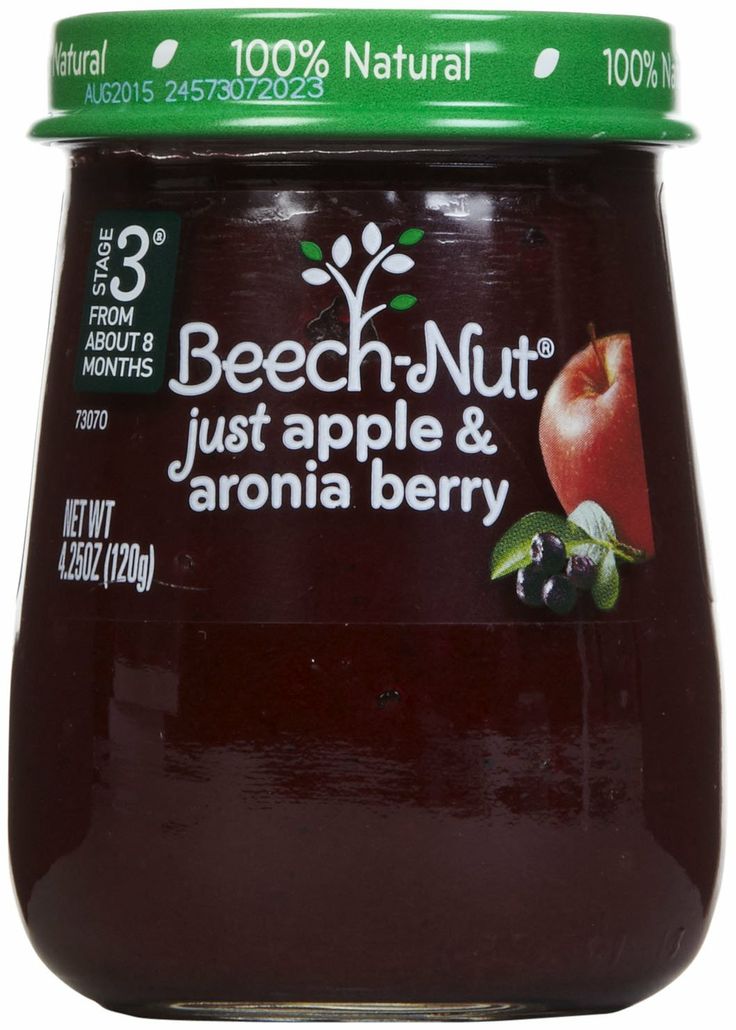
In Mamin-Sibiryak’s fairy tale “The Girl and the Jug”, the heroine collected berries in a clearing, saying: “I take one berry, I look at another, I notice the third, and the fourth seems to me.” So in the summer, when amazing smells of fresh berries spread around, it is difficult for mothers to resist the temptation and not treat the baby with ripe strawberries or fragrant raspberries, sweet gooseberries or spicy black currants. After all, berries are a storehouse vitamins and trace elements. And you probably want to make sure that the baby gets a supply of these nutrients for the whole year ahead. But is it possible in principle?
First trial
Despite the valuable composition, the berries are not the first to be introduced into baby foods. You can introduce the baby to them only closer to 8-10 months. And some, such as, for example, strawberries or cranberries , are recommended to be given only after a year. As for the very useful sea buckthorn, then the baby can be introduced to it even later - at a year and a half. Well, berries that contain seeds (for example, gooseberries) are better not to give the baby up to two years. nine0003
As for the very useful sea buckthorn, then the baby can be introduced to it even later - at a year and a half. Well, berries that contain seeds (for example, gooseberries) are better not to give the baby up to two years. nine0003
If your little one is already old enough to get acquainted with berries and, according to the pediatrician, he does not have any health problems, then you can offer him some blueberries or currants. As a rule, by this age, children already have several teeth, but it’s better not to give the whole berry to the baby. To begin with, the fruits of one type must be ground in a blender and given to the baby for a sample, the resulting puree is quite a bit, literally at the tip of a teaspoon.
Like any new product, berries can cause unwanted reactions in the baby's body. Therefore, the main rule when introducing complementary foods is not to give the child several different berries at once in order to understand which one caused an allergy or indigestion.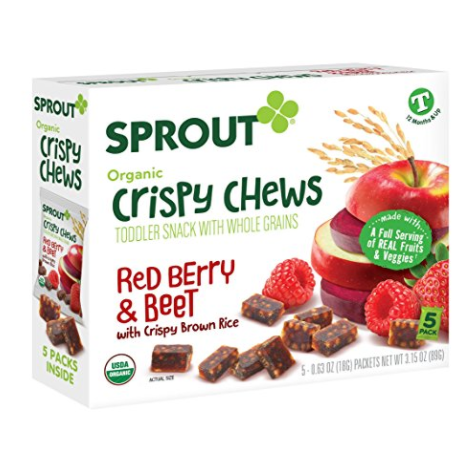 nine0003
nine0003
Track the reaction for 3-4 days, as it does not appear immediately on certain berries. Some berries are highly allergenic. For example, they include strawberries. When giving it to a baby, adequately evaluate the benefits that it will bring to the child's body by saturating it with vitamins, and the harm that it can cause if an allergic reaction or indigestion occurs in the form of diarrhea.
As a rule, sourness is present in berries due to the content of organic acids in them. But don't try to "improve" the taste of puree by adding sugar to it. Let the baby get acquainted with the natural taste. If you are afraid that the rich berry flavor will not appeal to a little fussy, then try to “disguise” it first. To do this, you can cook compote (from one type of berries) or add ground berries to children's cottage cheese or porridge. nine0003
If you want to please the baby with freshly squeezed berry juice, then do not forget about the important rule - dilute it half with water.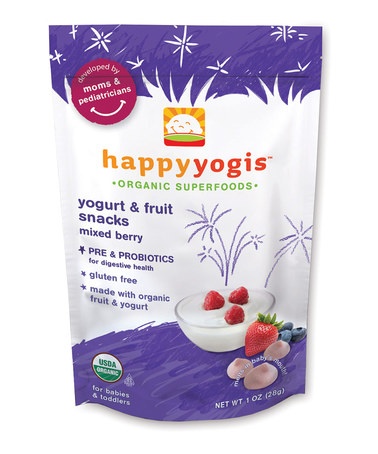 The fact is that concentrated juice can irritate the stomach.
The fact is that concentrated juice can irritate the stomach.
But no matter how useful the berries are, do not try to feed them to the baby "in reserve". The beneficial substances that they contain are not deposited for the future.
Overfeeding a child with berries, remember, at best, the excess substances will simply be excreted from the body with urine, and at worst, diarrhea threatens the baby. nine0003
Stocking up for the winter
Unfortunately, summer is ending quickly. But this does not mean that in winter the baby will be deprived of the joy of trying delicious berries.
After all, these gifts of nature perfectly tolerate quick freezing , and at the same time almost all vitamins are preserved in them. To freeze berries at home, select ripe, unspoiled fruits, remove the stalks, rinse them thoroughly, and then dry them on a towel. After that, put the berries in plastic bags and put them in the freezer. In winter, you can defrost berries in the microwave and delight your little one with a delicious and healthy berry dessert. nine0003
nine0003
Where there is more benefit
Each type of berry is useful in its own way. Depending on the valuable nutrients they contain, they can have beneficial effects on various body systems.
Strawberry. A baby can taste this fragrant berry right after a year. It is very useful, as it contains valuable trace elements - potassium, phosphorus, calcium, sodium, magnesium, iron, iodine. The content of vitamin C is also high in it. Other vitamins, such as A, B1, B2, E, PP, K, strawberries do not contain very much. This berry has a positive effect on the cardiovascular and nervous systems, and it is also advised to use it for diseases of the gastrointestinal tract. Fragrant strawberries can increase appetite. It also has anti-inflammatory properties and normalizes metabolism. nine0003
Beware! Strawberry is one of the strongest allergens, so it should be given to a baby with great care.
Currant. This berry can be given to a baby from 8-10 months.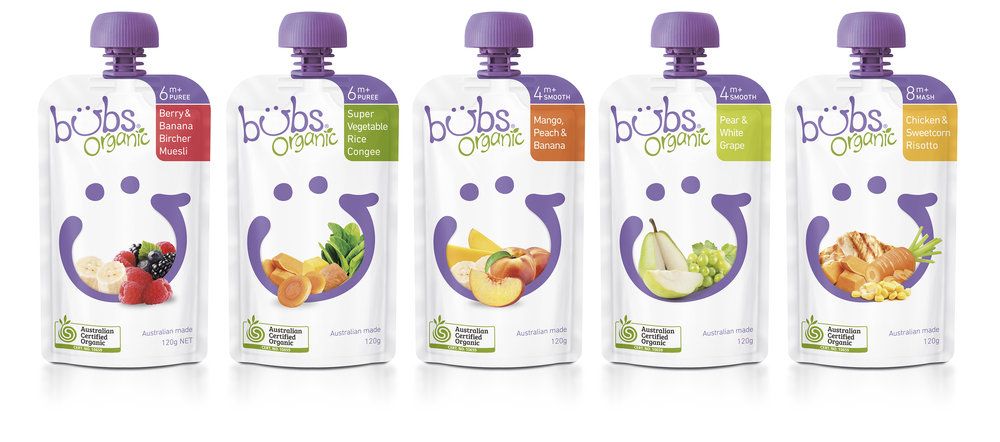 It contains vitamins C, B1, B2, B6, D, E, K, P, A, as well as pectins, carotenoids, sugars, organic and phosphoric acid, tannins, essential oil, vitamin K, phosphorus, iron and potassium salts. . Due to the abundance of vitamins, black currant is recommended to be included in the diet in case of hypo- and beriberi. It is also useful for gastritis. Currant has a tonic and anti-inflammatory effect, increases appetite.
It contains vitamins C, B1, B2, B6, D, E, K, P, A, as well as pectins, carotenoids, sugars, organic and phosphoric acid, tannins, essential oil, vitamin K, phosphorus, iron and potassium salts. . Due to the abundance of vitamins, black currant is recommended to be included in the diet in case of hypo- and beriberi. It is also useful for gastritis. Currant has a tonic and anti-inflammatory effect, increases appetite.
Beware! Long-term use of currants may lead to increased blood clotting.
Blueberry. Offer this forest sweet berry to your baby at the age of 8-10 months. It is rich in tannins, organic acids, including citric, malic, succinic, cinchona, benzoic, lactic, oxalic acids. There are such vitamins C, group B, carotene in blueberries. Blueberries are recommended to be used as an antidiarrheal agent. In addition, this berry lowers blood sugar levels, improves digestion and metabolism. It is widely known property of blueberries to increase visual acuity. And in general, it is considered the champion in the content of antioxidants. nine0003
And in general, it is considered the champion in the content of antioxidants. nine0003
Beware! Meet individual intolerance to blueberries. It is also not recommended to use it for diseases of the pancreas and problems with the duodenum 12.
Raspberry. Introduce raspberries into complementary foods at 10-12 months. It contains malic, tartaric, caronic, salicylic, formic acid, glucose, fructose, sucrose, tannins, pectin, nitrogenous substances, potassium and copper salts. Lots of raspberries and vitamin C. nine0003
Fresh berries can quench your thirst and also have a beneficial effect on digestion.
In addition, these beautiful scarlet berries have anti-emetic, anti-inflammatory properties, so in the summer it is worth preparing raspberry jam for future use so that in the winter you have a delicious cold remedy at hand.
In addition to its antipyretic properties, raspberry has a hemostatic and antitoxic effect, and also improves appetite.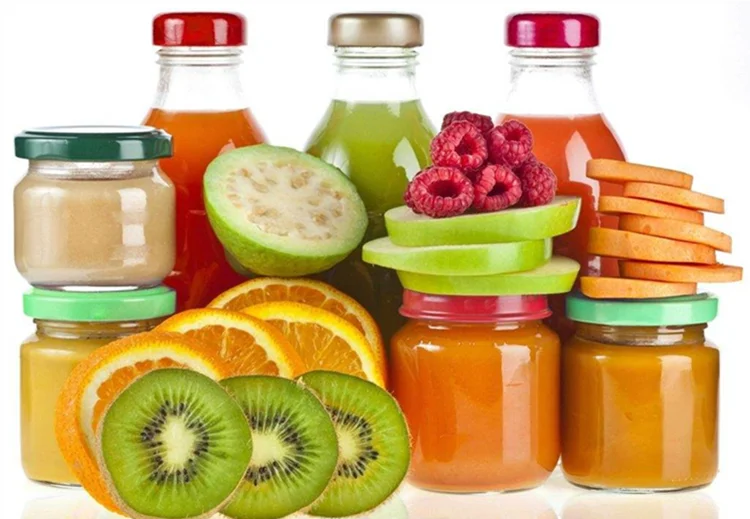 nine0003
nine0003
Beware! Remember that raspberries can cause allergies in crumbs. It is not recommended for asthma.
Fragrant note
Whichever way you choose to cook the berries, cook them before eating. The simplest thing is to chop the berries and add them to cottage cheese or yogurt, as all berries go well with dairy products. Such a dessert (without added sugar) is perfectly digestible and saturates the children's body with many vitamins. Berries feel good in berry-fruit salads. For example, you can finely chop your favorite crumb fruit, add a handful of berries (it’s better to cut large specimens too) and season the salad with low-fat cream or yogurt. nine0003
All children, as a rule, willingly eat berry kissels and mousses, drink compotes. However, remember that during heat treatment, berries lose a significant part of vitamin C. True, even such desserts are useful. Indeed, other valuable components are preserved in berry dishes - mineral salts, organic acids, carotene.



